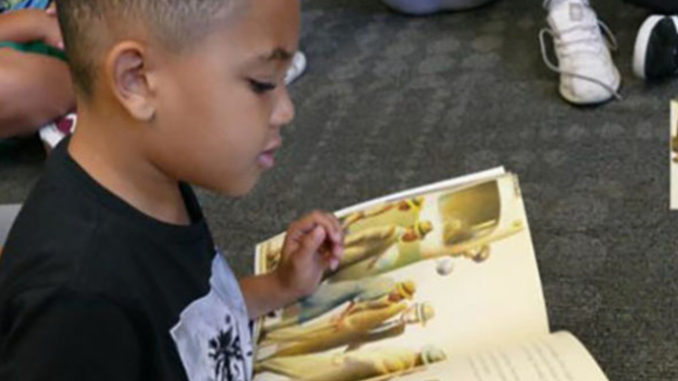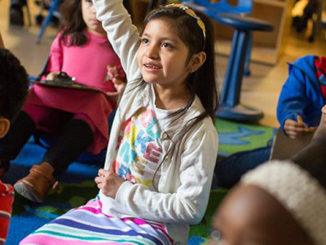
by Esmeralda Fabián Romero
Of the 1 million low-income African-American and Latino public school students in Los Angeles County, only 2 out of 10 of them are enrolled in a high-quality school, a first-of-its-kind study found.
There are 279 public schools closing the achievement gap for low-income Latino and black students, the study found. That’s out of a pool of 1,800 schools in the county that are serving a vast majority of these students. In total, there are 2,068 public schools in L.A. County.
The authors hope the study will spur sharing of “innovative and promising” practices to help these students achieve at higher levels. Among their findings:
● There was a higher proportion of independent charters and alternative choice schools — such as magnets — that made the list, compared with traditional schools.
● Few schools are closing the achievement gap for low-income black students — in all of L.A. County, only three high schools were doing so.
● For low-income Latinos, a higher proportion of independent charter high schools were closing the gap — 30 out of a total of 60.
● Of L.A. Unified’s traditional schools, 73 made the list: 70 are closing the gap for Latinos, seven are closing the gap for blacks, and four are doing so for both student groups.
The study was conducted by Innovate Public Schools–Los Angeles, a nonprofit focused on access to quality education, along with the Sol Price Center for Social Innovation and the Rossier School of Education Center on Education Policy, Equity and Governance at the University of Southern California. Innovate Public Schools has conducted a similar study in the Bay Area since 2015. USC’s Sol Price Center for Social Innovation has previously worked with Innovate Public Schools through one of its graduate programs, but this is the first time they have partnered for a research project. The Los Angeles study was released in late April and was funded by the Eli and Edythe Broad Foundation, which provides funding to this news organization.
To make the list of the L.A. Top Public Schools for Underserved Students, schools had to beat the statewide average in one or more factors including math and reading scores, college eligibility rates and suspension data, based on 2017-18 data from the California School Dashboard. The list includes traditional schools, independent charters and schools of choice such as magnets and pilot and community schools.
“I would say it was impressive at one level, that there were so many schools that were doing a good job of really educating the low-income students of color, and in that sense, that means that some of the narratives we hear about some schools falling behind, struggling to overcome some of these challenges and so forth, that narrative is not correct,” said Gary Painter, director of the USC Sol Price Center for Social Innovation and a co-researcher on the study.
“I think that the scope of the problem remains … there’s a lot of schools that aren’t achieving that objective. The step one is to assess the problem, understand where those innovative practices might exist and to uplift them,” Painter said. “The next step is to engage in a process of social innovation … within communities, to work with parents, to work with schools, to work with the district, some district officials, etc.”
Jeimee Estrada, regional vice president at Innovate Public Schools–Los Angeles, which headed the study, said, “I think that’s a very important story to tell, that there is more research to do about the practices and what the schools here locally are figuring out.”
Two other reports were released the same week as the the Innovate/USC study recognizing schools having the greatest impact on student achievement. U.S. News & World Report released its annual 2019 Best High Schools list, and the California Office to Reform Education (CORE) — a coalition of L.A. Unified and seven other California school districts — in collaboration with EdTrust-West launched its first-ever high-growth awards. A total of 906 schools were honored for having either three years or one year of high growth in English language arts and/or math. More than 300 L.A. Unified schools were recognized — many of which also appear in the Innovate/USC study.
Here are six takeaways from the Innovate/USC study:
1 In L.A. County, ‘Not a lot of schools are closing the achievement gap.’
There are more than 2,000 public schools in Los Angeles County, but only 15 percent of low-income African-American and Latino students attend a top public school, the study found. It lists the schools that are helping these students succeed. (Check out that list here.)
“What I did find surprising about Los Angeles is just the sheer volume of schools,” Estrada said. “L.A. is a very big place, but California is a big place, and there are not a lot of schools that are closing the achievement gap for low-income students of color.”
Regarding college eligibility, 71 percent of low-income African-American and Latino students from the list of top public schools were eligible for California’s state universities. Only 40 percent of low-income black and Latino students from all other L.A. County schools were eligible.
2 A lower proportion of traditional schools made it to the top public schools list.
Based on the study’s criteria, across L.A. County there was a higher proportion of charters and alternative choice schools — such as magnets — that made the list, compared with traditional schools. (The list excluded any schools that have admissions requirements.)
● Of 1,648 traditional schools, 195 were top schools (12 percent).
● Of 368 charter schools, 75 were top schools (20 percent).
● Of 52 alternative schools of choice, 9 were top schools (17 percent).
“On the one hand, that was really encouraging that there are so many different models out there that could be uplifted and learned from in order to improve systemwide,” Painter said. “What you see is that there’s actually quite a good representation of non-charters in addition to charters. I think what’s interesting about that, is that you can then explore what are the policies and practices within a charter environment that have led to success on the metric of closing the achievement gap.”
Painter noted that the study shows, “It’s not just a simple story of charters do better or schools of choice do better more broadly, but instead, you see promising practices and successful practices throughout quite a number of schools.”
Estrada added, “The story that you’ll see in this report is that there are all governance types reflected. There are more charter schools at the high school level, but at other levels, and particularly for African Americans, you’ll actually note there are fewer charter schools than there are district schools.”
3 Very few schools are closing the achievement gap for black students.
Among the top schools, there are only 31 schools that are closing the achievement gap for African-American students, and just three of those are high schools.
The study also shows that fewer charters than district schools are closing the achievement gap for blacks.
● There are 473 schools serving at least 4 percent low-income African-American students in the county, but only 31 schools are closing the achievement gap for them.
● Only three high schools in the county made the top public schools list. All three are in L.A. Unified. One is a magnet school, one a charter and one a traditional high school.
● At L.A. Unified, 9 schools are closing the gap for low-income black students in all grade levels: 7 traditional schools and 2 independent charters.
4 Charters dominate the list of top public high schools for low-income Latinos.
For low-income Latinos, charters make up a higher proportion of high schools that are helping them succeed.
● In the county, there are 1,331 schools serving at least 43 percent low-income Latino students.
● Of those, 257 schools are closing the achievement gap for low-income Latinos.
● 30 of the 60 high schools are independent charters. The rest are a mix of traditional schools and alternative choice schools, such as magnets.
“Undoubtedly, the low-income Latino high school list is very much dominated by charters,” Estrada said. But overall the study shows “that there are pockets of excellence in all types of schools. There are pockets of excellence in magnets. We don’t have a high representation of magnets, but there are pockets of excellence in magnets. There are pockets of excellence in district schools, and also in charters.”
5 Here are the breakdowns for L.A. Unified schools that made the list.
There are 130 schools in L.A. Unified that made the list of top performers for low-income blacks and Latinos.
● 125 L.A. Unified schools are closing the gap for low-income Latino students.
● 9 are closing the gap for low-income black students.
● 4 are closing the gap for both student groups.
Of the traditional schools in L.A. Unified, 73 made the list:
● 70 are closing the gap for Latinos.
● 7 are closing the gap for blacks.
● 4 are closing the gap for both student groups.
When asked to respond to the study, an L.A. Unified spokeswoman said, “We are reviewing the new report from Innovate Public Schools and their partners at the University of Southern California and embrace their efforts on behalf of our low-income Latino and African-American students. In Top Public Schools for Underserved Students, it appears their research does not take advantage of several key indicators that could better identify schools that are making a significant impact on student achievement. Los Angeles Unified remains committed to sharing best practices that accelerate growth and empower our students to reach their full potential.”
6 The goal is understanding better practices to close the achievement gap.
The study shows that it is possible for all models of public schools to close the achievement gap for low-income Latinos and black students, the authors said, which can lead to sharing and understanding better practices among all schools.
“How do we get more schools to close the achievement gap? By showing them what’s being done and showing them that it’s possible,” Estrada said. “The report shows that it’s possible for low-income kids of color to learn at high levels. It sheds a light on excellence and provides a road map for schools to get there.”
She said that school district superintendents have welcomed the report and some are eager to know how they are doing in closing the achievement gap and who is doing better.
“We will be working very hard to ensure that superintendents are using it as a motivator for more schools to reach this bar, and for celebrating and energizing the teachers and principals that are working really hard to make this happen, because it is not easy,” she said.
“We highlight a lot what are the gaps in our system, and we need to. Parents and the public need to know the harsh reality that our education system is not delivering for underserved students. But we also have to look at the places where it’s happening, because we need to learn those practices. We need to learn from excellence, and we need to celebrate it,” Estrada said.
Painter said this study “is the first step in the series of long steps to really help understand better what practices can help close the achievement gap, and to look at those that were able to do that.”
Esmeralda Fabián Romero is a senior reporter at LA School Report.



